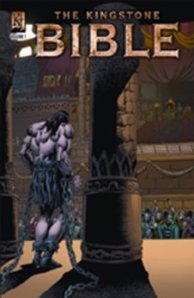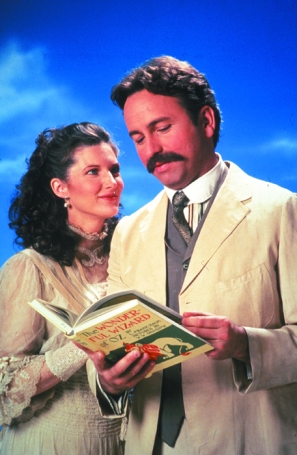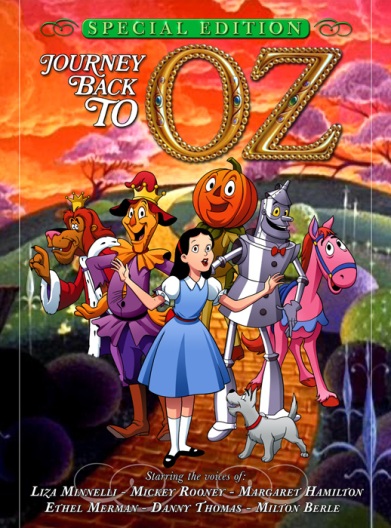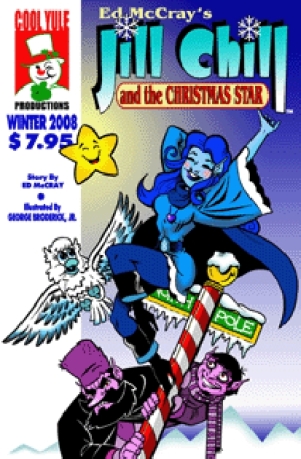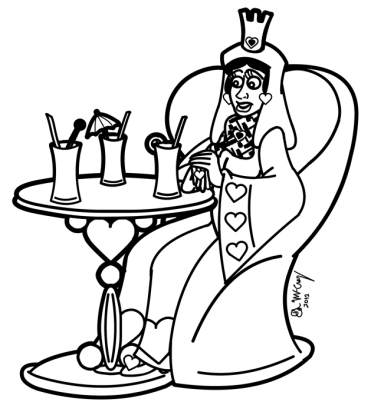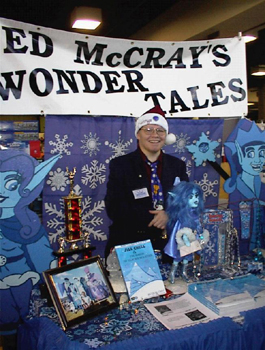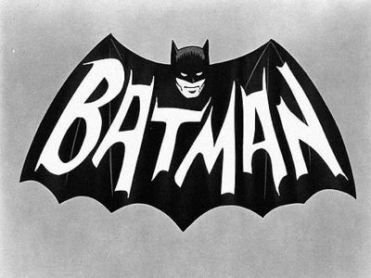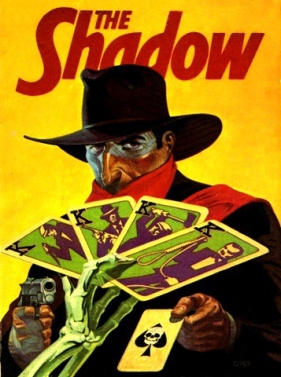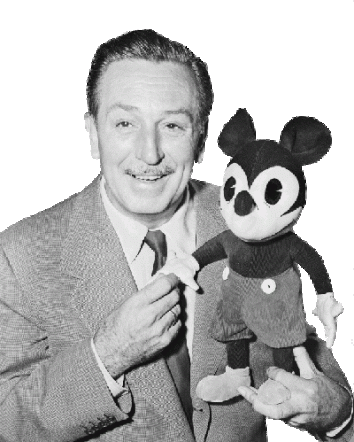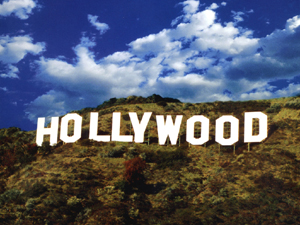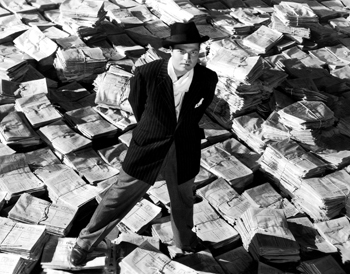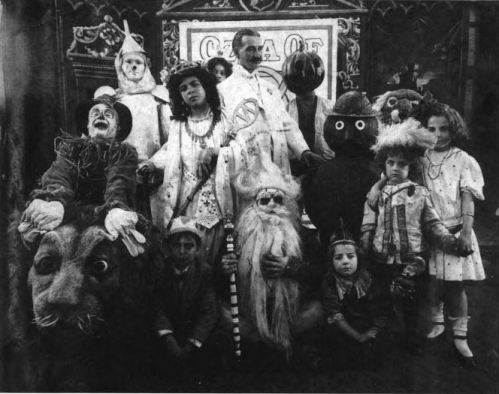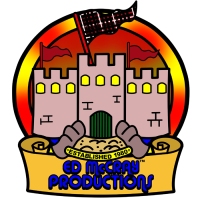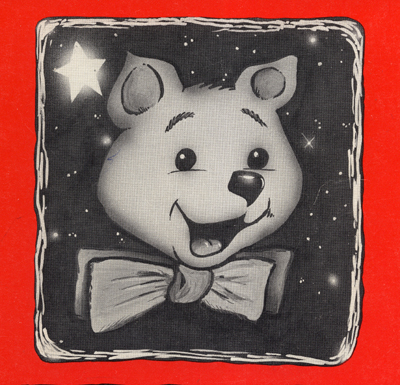
The Cinnamon Bear, Copyright 1937 Glanville Heisch, All Rights Reserved.
It’s Christmas in July and in celebration I’ll tell you a Christmas story of which I’m sure you’re unaware,
So sit back, and relax as you learn about that forgotten holiday favorite, our hero, The Cinnamon Bear…
Every holiday season you know when Christmas is coming because we get bombarded by all of those beloved Christmas specials that have played for decades. A charming little narrator who looks just like a now totally forgotten celebrity comes out in the form of a Snowman, Santa Claus’ Mail Man, or a Groundhog and they proceed to tell us all about some holiday hero that they insist we have never heard of before when, in fact, we, along with the rest of America, have. Yet, we tune in year after year to be retold these heartwarming stories time and again. Now, allow me to put on my own narrator guise as I tell you about a Christmas character I truly am certain that most of you are unaware of, that original Christmas fantasy character Paddy O’ Cinnamon, “The Cinnamon Bear”. I’m sure most of you have never heard of this beloved Christmas property before and I hadn’t either until January of 2007. I’d just finished up the script for “Jill Chill & the Christmas Star” and a friend of mine sent me an audio tape set of Christmas radio shows as a gift. Although I pride myself on my vast Christmas knowledge and I had become acquainted with old time radio in high school, this was one area I’d never got into before so I found it to be rather interesting.
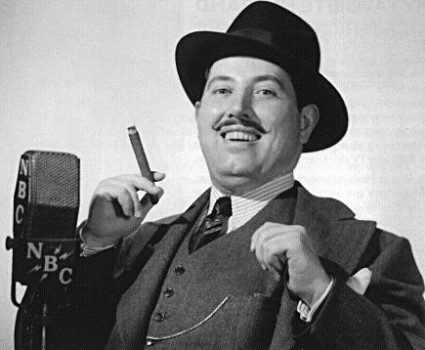
Hal Perry is The Great Gildersleeve
After going through that tape set of under a dozen shows I began looking online for other Christmas radio programs and I found hundreds of them. (Archive.org is a tremendous resource for Old Time Radio shows with dozens of pages devoted to this forgotten but entertaining art form.) In most cases they were simply Christmas themed episodes of a series such as “The Jack Benny Program” or “Fibber McGee & Molly” much like how television shows have Christmas episodes today. One of the finest consistent series for quality Christmas episodes is “The Great Gildersleeve”. This program was one of the first spin off series in entertainment history and certainly among the longest running. It would be like “Seinfeld” spinning of a show about Newman. Gildersleeve was the first single father figure ever portrayed in popular culture and many of the show’s writers went on to work on such classic television staples as “I Love Lucy” and “The Andy Griffith Show” and “The Great Gildersleeve” proudly stands on par with these other great series. It’s a shame that it’s not as remembered as “The Honeymooners” and “Lucy” because it certainly deserves to be.
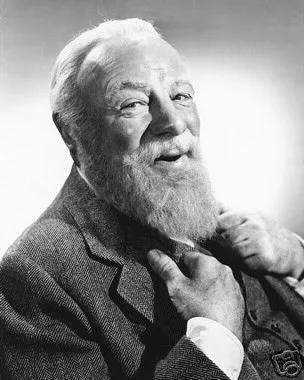
Miracle on 34th Street Press Kit Photo, Copyright 1947 20th Century Fox, All Rights Reserved.
I also found the occasional one offs and anthology episodes where they’d often adapt a noted Christmas book or story into a radio production. You could learn about where Christmas Seals came from or how the song “Silent Night” was written and there were always adaptations of Christmas films like “Miracle on 34th Street” and “It’s A Wonderful Life”. In fact, one of the most interesting things is to listen to these adaptations and see how much they changed the stories. There’s a 30 minute version of “Miracle on 34th Street” where Kris Kringle acts as his own legal representation and it sure makes the story rather odd.
There were also Christmas variety shows such as “Kraft Music Hall” with Bing Crosby and Bob Hope’s USO Christmas shows. We don’t really have the Christmas variety show on television anymore but these were a staple for well into the 1970’s. Often a few gust stars would drop by and with the starring host they’d put on some skits and sing some songs. This format had it’s start in radio.
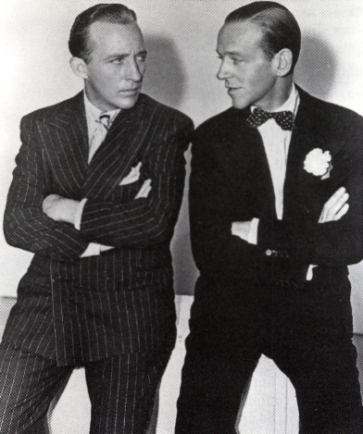
Holiday Inn Press Kit Photo, Copyright 1942 Paramount Pictures, All Rights Reserved.
Among all of this festive frilliness I quickly found a 26 episode Christmas serial that seemed to be very popular in online circles known as “The Cinnamon Bear”. It would be discussed everywhere I went as if everyone should know what it is but I’d never heard of it before. I did some google searches and I would soon come to learn what none of these other people had seemed to notice; that “The Cinnamon Bear” is probably the most important piece of Christmas fantasy ever produced because it is the Rosetta Stone to so many things we now associate with Christmas but take for granted.
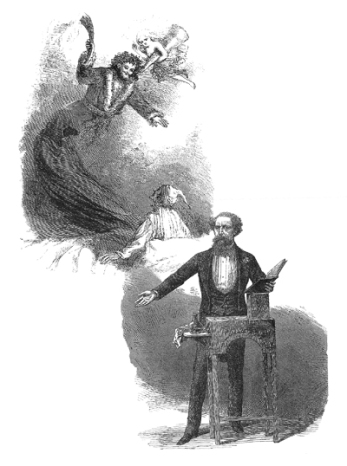
Charles Dickens Reading of A Christmas Carol
Everyone knows and loves all of those beloved Christmas specials from the 1960’s but what I offer tonight is most likely the linked ancestor between those and the printed Christmas stories of the 1800’s on. Everyone cites Rev. Clement Clark Moore’s popular poem “A Visit From Saint Nicholas” better known today as “The Night Before Christmas” as the original Christmas fantasy but there were, in fact, many more before that. I will look at some of these at another time. We’re also aware that Charles Dickens popularized Christmas stories with his first Christmas novel “A Christmas Carol”. But then we make the nearly one hundred year jump to the 1940’s with films like “Miracle on 34th Street” and “It’s A Wonderful Life” but there are, in fact, a lot of Christmas stories in print, film, and radio that we’re skipping over if we want to get the whole story. So what makes “The Cinnamon Bear” perhaps the most important Christmas fantasy project of all time? Let’s take a look and see.

It’s A Wonderful Life, Copyright 1946 Republic Pictures, All Rights Reserved.
“The Cinnamon Bear” began as a radio serial in 1937 that local dept. stores would sponsor as a tie in promotion to increase the foot traffic into their stores for the holiday season. This was during the Great Depression and one of the reasons radio probably became so popular was that it allowed for impoverished Americans to escape from their serious problems into a fantasy world that they created with their own imaginations. Like the movie serials, radio serials geared toward a juvenile audience were quite popular. Often times they were adapted from comic strips like Superman, Popeye, Mickey Mouse, and Little Orphan Annie but occasionally original serials would spring up. What made “The Cinnamon Bear” so innovative was through this unique licensing scenario it lead to the viability of such a property.
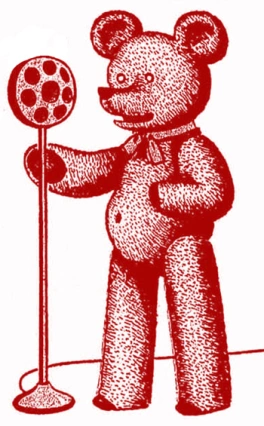
The Cinnamon Bear, Copyright 1937 Glanville Heisch, All Rights Reserved.
The series was syndicated locally and one of the first syndicated radio series ever made. It would begin on Thanksgiving night or Black Friday and air every day except Sunday as a way to count down to Christmas. Kids could not only listen to and imagine the adventures of the Cinnamon Bear but they could go and visit him at their local Dept. Store via a guy in a Cinnamon Bear suit who would be in the Toy Dept. with or in place of Santa Claus. Often you would get a “Cinnamon Bear” coloring book and a metal ornament of a silver star with the bear stamped on it. Such tie-ins would be instrumental in the flood of Dept. Store Santa’s in the coming decades.
As for the series itself, it tells the story of a twin brother and sister and their quest through Maybeland with the Cinnamon Bear as they chase the Crazy Quilt Dragon who’s run off with the silver star for the top of their Christmas tree. Along they way they have numerous adventures as they try to reclaim the star and get home before Christmas as they meet dozens of imaginative characters. The series features a who’s who of radio and early television notables including the original Mr. Wilson from “Dennis the Mennace” and Floydd the Barber from “The Andy Griffith Show”. It was intentionally written to evoke the feeling of the Oz stories, Alice in Wonderland, and the Raggedy Ann books and succeeds in spades. When I first heard it I was struck by how similar of a structure and writing style this series had to my original 1997 screenplay “The Ballad of Jill Chill”. It was because of the research, study, and analysis I’d done in the creation of that Christmas story that I was able to see what no one else has been able to see. The important place “The Cinnamon Bear” needs to be revered in the Christmas pantheon of holiday folklore.
It is said that “The Cinnamon Bear” has played somewhere in America every year since it debuted which Chicago, Portland, and Seattle remain some of the areas where he is best known. There is even a “Cinnamon Bear” Christmas cruise that runs out of Portland each year where fans dress up as their favorite characters and enjoy their trip mingling with many of the characters from the series.
In the radio world, “The Cinnamon Bear” was such a smashing success that a competitor made their own serial the following year, “Jonathan Thomas and his Christmas on the Moon” that competed with it. While “Jonathan Thomas” is a nice little series I have never enjoyed it as much as I do “The Cinnamon Bear”. It seems a bit more dated to the 1930’s and a lot less polished than “The Bear” is even though it’s still an entertaining series. I personally enjoy the Americana and nostalgia of “The Cinnamon Bear” and that’s and element that while “Jonathan Thomas” has somewhat, isn’t as timeless as what can be found in “The Bear”. I’d still recommend people listen to both series and see what they think for themselves.

Original Rudolph the Red-Nosed Reindeer Book, Copyright 1939 Montgomery Ward, All Rights Reserved.
These two radio serials proved to be so popular in their initial airings with their Dept. Store tie-in that department stores decided to create their own Christmas characters rather than pay a royalty fee for the popular “Cinnamon Bear”. The first of these new characters was “Rudolph the Red-Nosed Reindeer” who debuted as a Montgomery Ward give away storybook in 1939. Although the influence of “The Night Before Christmas” is always cited as being the inspiration for “Rudolph” we never hear of what really initiated his genesis; the success of two vastly popular Christmas radio serials the two years before “Rudolph” came to be. There were other regional Christmas characters affiliated with various dept. stores too such as the elfin Keeper of the Keys known as Mr. Jingleing, and the Cajun snowman Mr. Bingle. But the reason Rudolph’s popularity really took off while the other characters remained regional delights was because of in 1949 “Rudolph” was translated into the popular novelty song first sung by that singing cowboy Gene Autry. It was because of the popularity of that song that “Frosty the Snowman” , “Here Comes Santa Claus”, “The Chipmunk Song”, and other popular follow up novelty records were born in addition to dozens of now forgotten Christmas novelty songs centering around their own Christmas characters. None of this would have happened without the success of “The Cinnamon Bear” leading the way. It may even be fair to ask if Dr. Seuss would have even invented the Grinch in the 1950’s if this Christmas novelty genre didn’t already exist to market such a story in.

Rudolph the Red-Nosed Reindeer Pres Kit Photo, Copyright 1964 Rankin/Bass Productions, All Rights Reserved.
In 1964 Rankin/Bass Productions produced “Rudolph the Red-Nosed Reindeer”, the world’s SECOND Christmas special (“Mister Magoo’s Christmas Carol” was the first 2 years earlier, however, the first Christmas perennial America tuned in annually to hear was a 1940’s radio show called “The Plot To Overthrow Christmas“ in which all of the damned souls in Hell plot to kill Santa Claus and destroy Christmas for all. This little known special aired for 7 consecutive Christmases first beginning in the World War II years and is especially dark. It’s hard to believe people back then cherished this like people cherish “Charlie Brown” today. It also beat out Tim Burton‘s “Nightmare Before Christmas” by over 50 years in that creepy Christmas genre. There was an attempt to turn that Christmas perennial into a special during the 1970‘s and songs were even written but it never came into fruition.) but “Rudolph” began the string of Christmas specials we now remember with “Charlie Brown” in 1965 (although it IS an episode and NOT a special but we’ll have that discussion another time. 🙂 ), the “Grinch” in 1966, and so on. These Christmas specials were always based upon the songs and rarely around a book. Even “Rudolph” was inspired by the song with no ties to the original giveaway book. The 1940’s Max Fleischer cartoon is a much more faithful adaptation of the book.
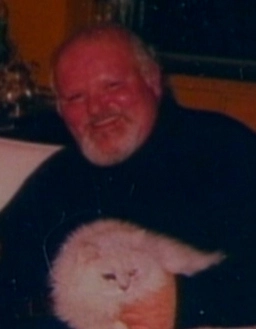
Romeo Muller
The interesting thing is that Romeo Muller’s “Rudolph” script and the style and humor all his other Christmas specials include is the exact same template found in “The Cinnamon Bear”. Romeo Muller would have been a boy in 1937 and he grew up to work in radio and it’s not that far of a leap to ask if he was influenced by the charm of “The Cinnamon Bear” when he was deciding how to adapt Rudolph into an hour long project. “Rudolph” had the Island of Misfit Toys, the skinny Santa Claus, the elf who wanted to be a dentist, and numerous other imaginative ideas that are along the same lines of what is to be found in “The Cinnamon Bear”. Ideas found in his subsequent specials are also along these same lines. Those later Christmas specials like “The Little Drummer Boy”, “Frosty the Snowman”, and even the Easter perennial “Here Comes Peter Cottontail” are all based around those holiday novelty songs authored in response to “Rudolph”. “The Cinnamon Bear” set the stage for all of it.
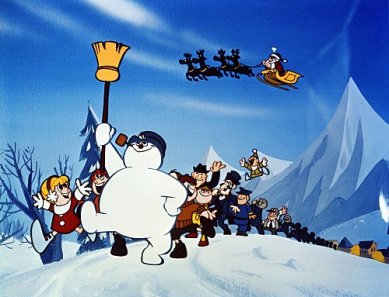
Frosty the Snowman Press Kit Photo, Copyright 1969 Rankin/Bass Productions, All Rights Reserved.
So in at least 3 ways “The Cinnamon Bear” played a vital role in the genesis of and is probably responsible for the Christmas Special as we know it today. If it had not been for “The Cinnamon Bear” Montgomery Ward would have never done their own Christmas promotion and Rudolph would have never been created. If Rudolph had never been created then there would have never been the 1949 song that spawned Frosty the Snowman and a whole slew of Christmas fantasy characters. If none of these characters had existed then there would have never been any 1960’s Christmas specials for what would they have been based upon? The tone we now associate with the Christmas special seems to be set by the standard set by “The Cinnamon Bear” making it the most important Christmas property we have never heard of.

The Grinch, Copyright 1966 Dr. Seuss, All Rights Reserved.
So why haven’t we ever heard of “The Cinnamon Bear” before? It’s not so easy to determine.It’s not like there is some Grinch stealing his spotlight after all. The writer had intended to do a “Cinnamon Bear” book in the 1940’s but paper shortages during World War II ceased that from happening. In the 1950’s the serial soundtrack was used as the audio for a puppet adaptation that aired in Chicago. Although some sources claim that this is a lost series where no footage is known to exist you can see some of the episodes up on Youtube. (It is rather hokey) In the 1980’s ornaments and even a plush toy of the Cinnamon Bear were produced and there have been two rather bland and forgettable storybook adaptations and an interesting history book about “The Cinnamon Bear” printed. In the early 2000’s a few unplayed sets of LP’s of the series were found and restored and released as a CD set. Those and the aforementioned Cinnamon Bear Cruise is about the end of the line for “The Bear”.
One of my dreams is to adapted “The Cinnamon Bear” into a comic book as if it had been a 1960’s Christmas special just to try and bring it back again and give it the long overdue attention it deserves. I’m probably the one person on the planet who could best serve the Bear because of my background in Christmas lore. I even wrote the script a few years ago and tried to locate the family of Glanville Heisch to do it but I could never find any way to contact them. This year would have been the ideal time to have done a “Cinnamon Bear” comic book since it’s the 75th anniversary of the series but perhaps someday this dream can become a reality.
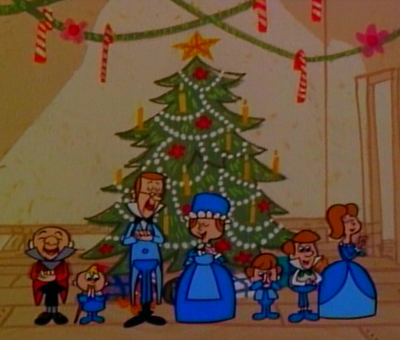
Mister Magoo’s Christmas Carol, Copyright 1962 UPA Productions, All Rights Reserved.
This year start a new tradition and locate “The Cinnamon Bear” online (You can get it on NUMEROUS websites) and begin playing it on Thanksgiving evening or the day after and play an episode every day (except Sundays) until Christmas. It’s interesting to try out what out grandparents used to do.
To order your copy of “The Cinnamon Bear” I’d recommend this website: http://www.radioarchives.com/The_Complete_Cinnamon_Bear_p/ra031.htm as it’s the restored version of the show.
You can also hear a sampling and download the original coloring book and fan club newsletters here: http://www.cinnamonbear.co.uk/
For more information on “The Cinnamon Bear Cruise” visit this website: http://www.cinnamonbearcruises.com
To join The Cinnamon Bear Brigade go here: http://www.mwotrc.com/rr2006_12/cinnamon.htm&sa=U&ei=wLoRUI_nLYXJ6wGluYHgCA&ved=0CCMQFjAEOBQ&usg=AFQjCNHQpKKC-rveWP8rpCUGSFVdnKceAA
You’ll be glad that you did!

A Charlie Brown Christmas, Copyright 1965 Charles Schultz, all Rights Reserved.


